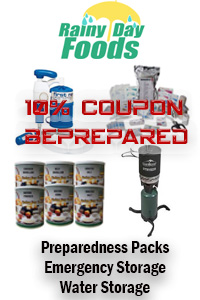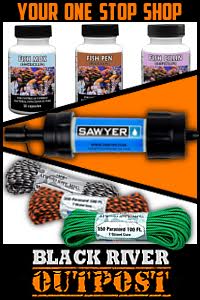I remember watching an episode of Doomsday Preppers, the one where a guy almost destroys the hearing of another prepper by firing next to his head. I still remember one of his quotes from the episode: “Bigger is always better!” Bigger magazines, bigger guns capable of firing larger projectiles. If it left a bigger hole than it must be a superior weapon, But is that truly the case? Surely if I could find the strength to should an Howitzer and fire it in fully automatic mode (if there were such a thing) I would indeed be a one man army but that is simply unrealistic. When it comes to practical firearms, be it pistols or rifles which we can all purchase (those of us in free states) does bigger correlate directly to being better?
Being a reloader I understand that there are a myriad of factors to consider when discussing penetration power and lethality, including but not limited to: Projectile shape/weight, type of powder and load, primer used, weather conditions et al. All I can do for the purpose of this post is pick a somewhat generic “middle ground” which will help to illustrate my point…which is this: The size of the hole does not necessarily correlate directly to lethality. Indeed a 223 round fired from an AR15 might leave a smaller hole in a piece of paper at 10 yards versus a 12 Gauge slug but when you factor in energy, muzzle velocity, range and the capability to put multiple rounds downrange quickly (versus a single load shotgun) the 223 is indeed one of the most lethal loads out there. I could also add that the 308 is even more lethal than the 223 and indeed does leave a bigger hole in that piece of paper at the range, but as always there are trade offs. An EBR is heavier than the AR15 and so is the ammo, not to mention you will probably carry less of it. We can go way down the rabbit hole on this one so I’ll revert back to my statement that this is merely a generic overview of the topic, primarily for those who are new to shooting.
There are many variables which need to be taken into consideration when examining killing power, if you are new to the game maybe this will help de-conflict a few rumors you might have heard at your local range. Chuckhawks.com has some well written information which I will use here, additionally I pulled the stats on some popular cartridges that we all love to fire. Take into account the explanations of kinetic energy and sectional density (combined with velocity) and then look at the stats for each type of projectile. After which ask yourself, is bigger always better?
Energy and killing power
Kinetic energy, the ability to do work (or in this case damage), is the most common measure of killing power for rifle bullets. And it is, in fact, a reasonable indicator. But it is by no means the only factor, or even the most important factor. Energy gives us an idea of how much power there is to initiate things like bullet expansion and penetration, but does not guarantee that they will occur.
223: 55 Grain Projectile.
-Energy at 100 yards: 957 ft/lbs
30-06: 150 Grain Projectile.
-Energy at 100 yards: 2368 ft/lbs
12 Gauge 2 3/4 Slug.
-Energy at 25 yards: 2165 ft/lbs
12 Gauge 2 3/4 00 Buckshot.
– NA
9mm: 115 Grain Projectile.
-Energy at 50 yards: 312 ft/lbs
45 ACP:
-Energy at 50 yards: 374 ft/lbs.
Sectional density
Sectional density (along with bullet construction and impact velocity) is among the key factors in determining penetration. Penetration is important because the bullet must get well inside the animal to disrupt the functioning of its vital organs. A bullet that fails to penetrate the fur, skin, muscle, and bone necessary to reach the vital organs is unlikely to bring an animal down.
Sectional density is a bullet’s weight (in pounds) divided by the square of its diameter (in inches). Basically, a long thin bullet of a given weight penetrates better than a short, fat one. Which makes sense when you think about it. For example, if other factors (like impact velocity and bullet construction) are equal, a 150 grain .270 bullet will penetrate better than a 150 grain .35 caliber bullet.
223: 55 Grain Projectile.
-Muzzle velocity: 3240 fps
30-06: 150 Grain Projectile.
-Muzzle velocity: 2910 fps
12 Gauge 2 3/4 Slug.
-Muzzle Velocity: 1900 fps
12 Gauge 00 Buckshot.
-Muzzle velocity 1145 fps
9mm: 115 Grain Projectile.
-Muzzle velocity: 1180 fps
45 ACP:
-Muzzle velocity: 890 fps.
Now that you have seen a bit of data check out these two videos where penetration tests were conducted. One is obviously a bit more scientific than the other but the end state is essentially similar.
Penetration Test 1
Penetration Test 2
Information used with respect to the explanation of Kinetic Energy and Sectional Density was sourced from Chuckhawks.com, visit their website for information which includes The Column (news and editorials), air guns, firearms ownership and rights, general firearms topics, gun writers, gun cleaning, “how to” articles, hunting information, security/personal protection, wilderness survival and much much more.









2 comments
Like the new mobile format! Helps when wasting time at work.
Author
Thanks much! Will go over all the specs tomorrow, but I’m happy to facilitate any and all work distractions. 🙂